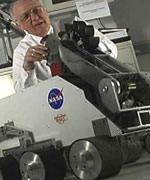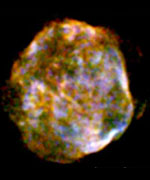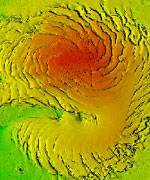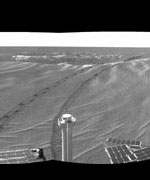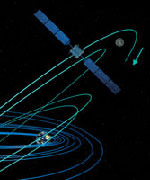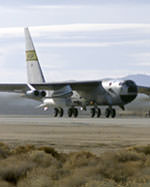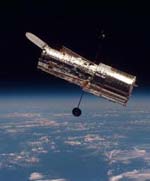
Expressing the sense of the House of Representatives relating to the extraordinary contributions resulting from the Hubble Space Telescope to scientific research and education, and to the need to reconsider future service missions to the Hubble Space Telescope.
Whereas discoveries from the Hubble Space Telescope have dominated space science news over the last 10 years;
Whereas the Hubble Space Telescope has provided proof of black holes, insights into the birth and death of stars, spectacular views of Comet Shoemaker-Levy 9’s collision with Jupiter, the age of the Universe, and evidence that the expansion of the Universe is accelerating;
Whereas the inspiring scientific discoveries from the Hubble Space Telescope reach millions of students each year and have been important in encouraging students to study the sciences;
Whereas installation of new instruments in 1997 and 2002 improved Hubble’s observational capabilities by a factor of 10;
Whereas the 2000 National Academy of Sciences Decadal Survey endorsed a plan to maintain the Hubble Space Telescope until 2010;
Whereas the Hubble Space Telescope has been the National Aeronautics and Space Administration’s most scientifically productive mission, accounting for 35 percent of all National Aeronautics and Space Administration discoveries in the last 20 years;
Whereas the demand for research time on the Hubble Space Telescope in 2003 was approximately 8 times that available;
Whereas approximately $200,000,000 worth of instruments have largely been built, including scientific instruments that would provide significant improvements in Hubble’s scientific power and including replacement gyroscopes and batteries, which could keep the telescope in operation until 2011 or 2012 and make the Hubble Space Telescope’s final years its most scientifically capable and productive;
Whereas the distinguished panel that studied scientific priorities for ultraviolet and optical astronomy in 2003 considered the continued operation of the Hubble Space Telescope by means of the SM-4 servicing mission to be its highest priority; and
Whereas the American Astronomical Society, the largest professional scientific association for astronomers and astrophysicists, believes a panel of experts should review the decision to limit prematurely the lifespan of the Hubble Space Telescope: Now, therefore, be it
Resolved, That the House of Representatives–
(1) recognizes the extraordinary contributions resulting from the Hubble Space Telescope to scientific research and education;
(2) strongly recommends that the Administrator of the National Aeronautics and Space Administration appoint an independent panel of expert scientists and engineers inside and outside of the National Aeronautics and Space Administration to examine all possible options for safely carrying out the planned servicing mission to the Hubble Space Telescope; and
(3) expresses its strong sentiment that the National Aeronautics and Space Administration should continue all planning, preparation, and astronaut training activities for the SM-4 servicing mission without interruption until the expert panel issues its report and until the National Aeronautics and Space Administration provides a timetable of compliance with recommendation R6.4-1 of the Columbia Accident Investigation Board report, which calls for `a fully autonomous capability for all missions to address the possibility that an International Space Station mission fails to achieve the correct orbit, fails to dock successfully, or is damaged during or after undocking’, since National Aeronautics and Space Administration compliance with the recommendation will allow both a Hubble servicing mission and missions to the International Space Station to be carried out safely.

